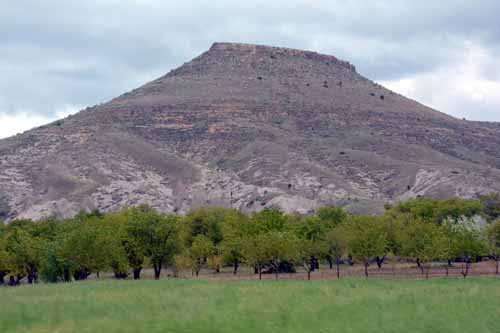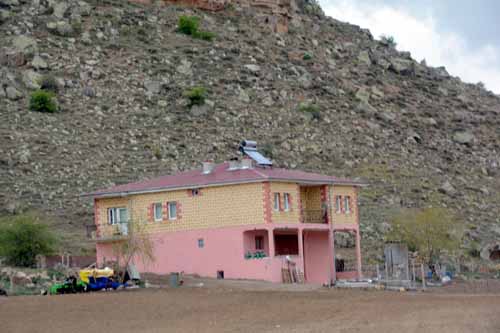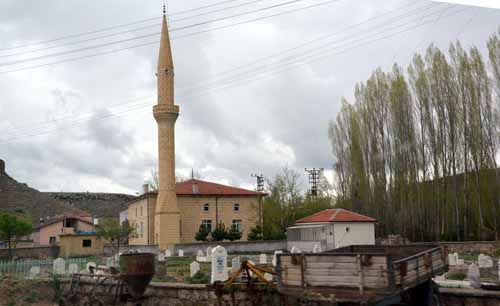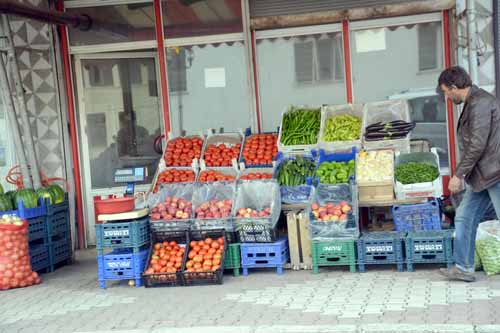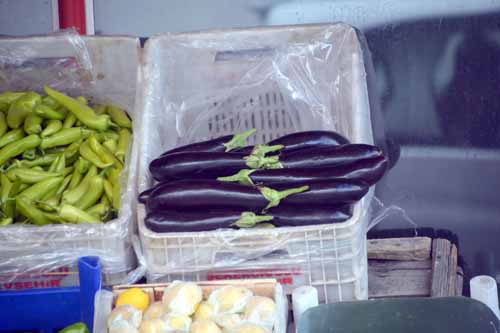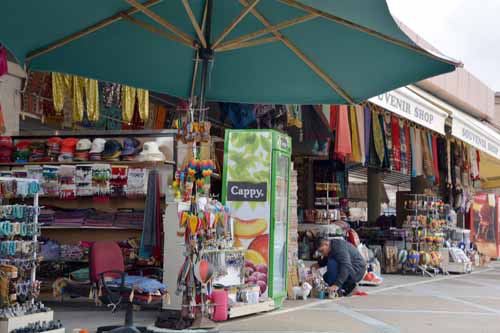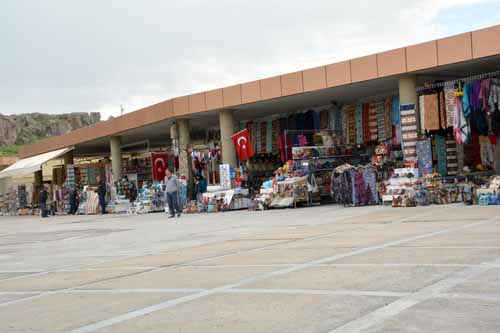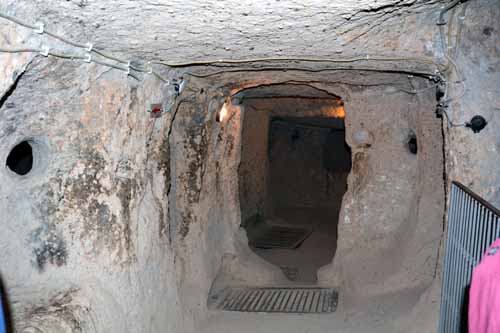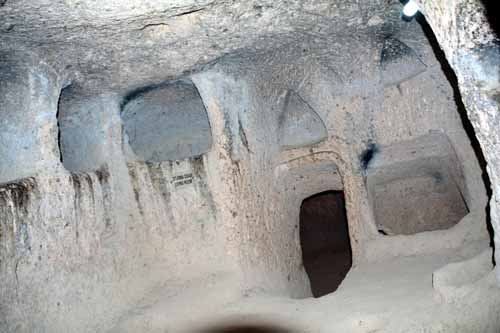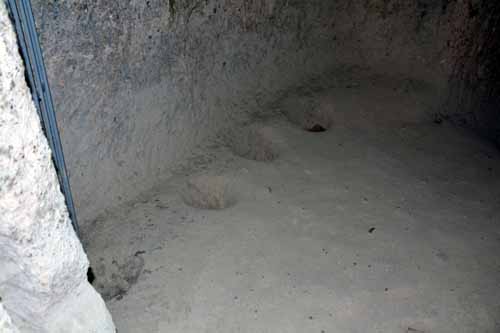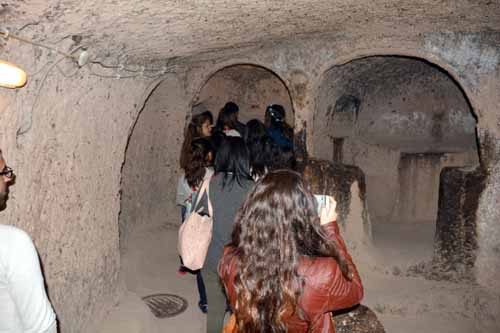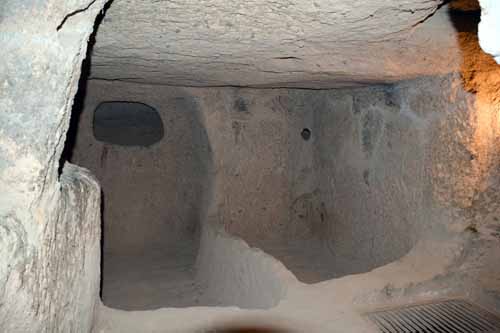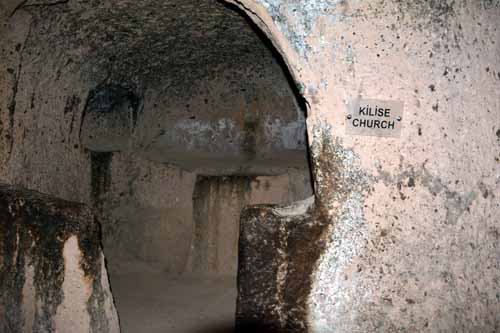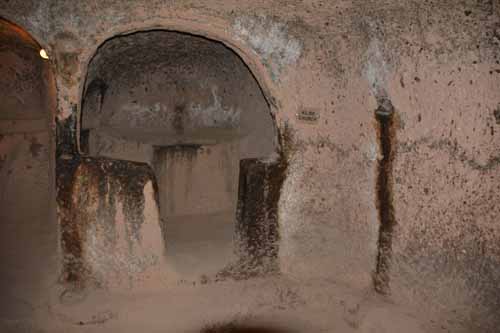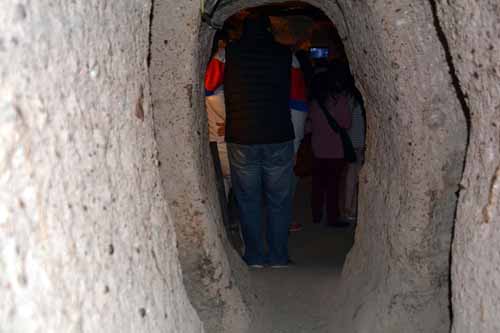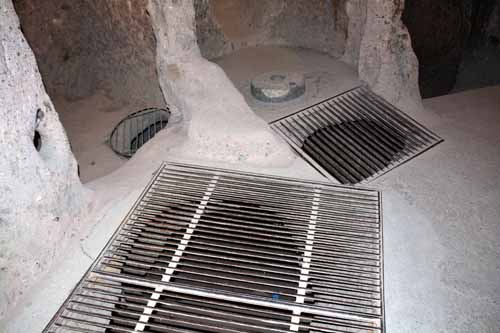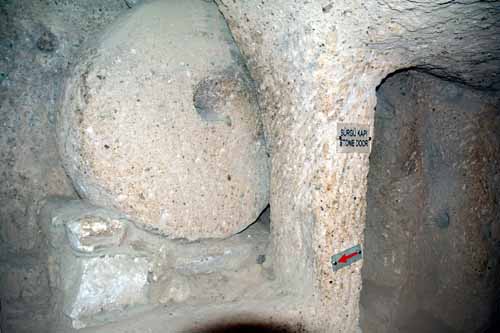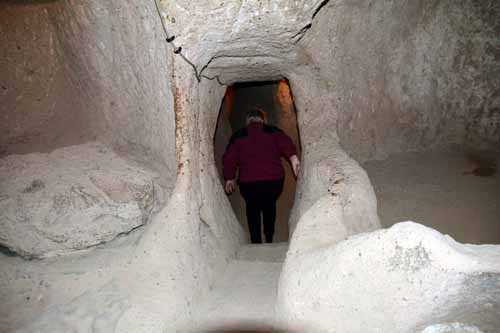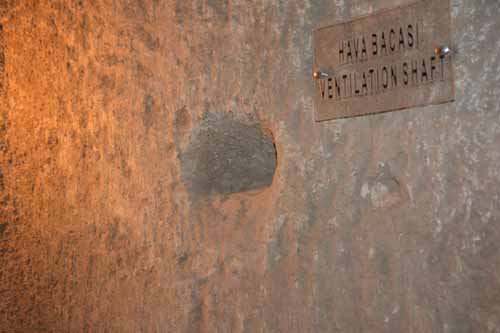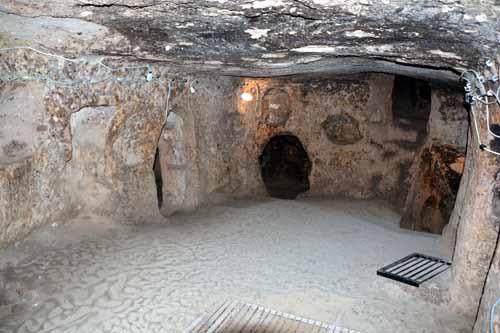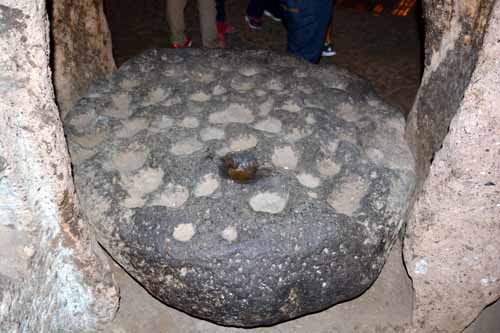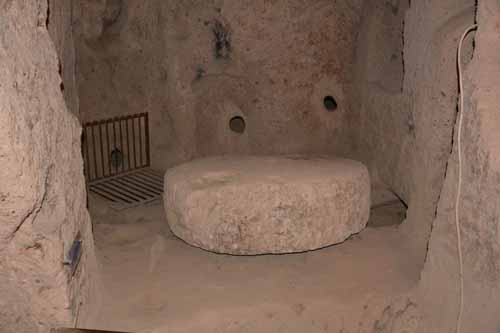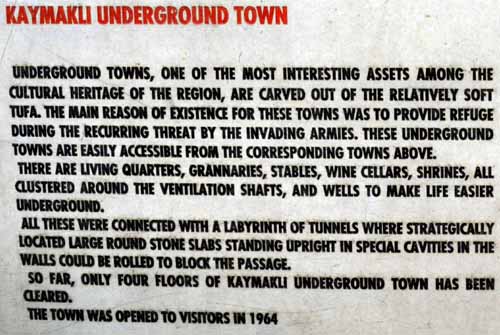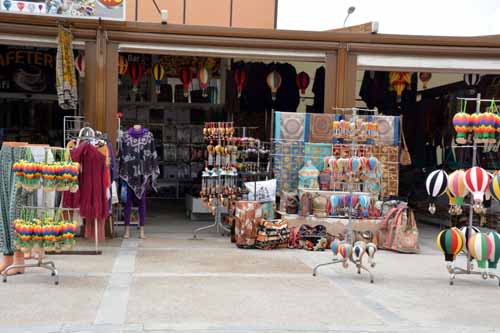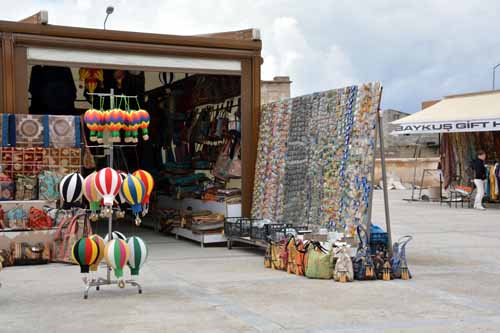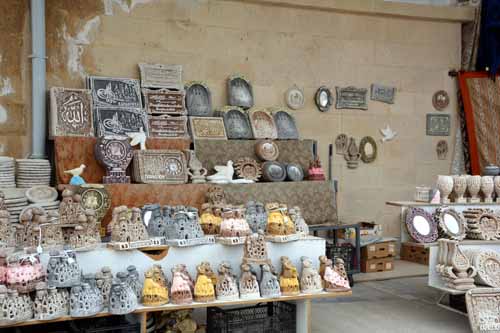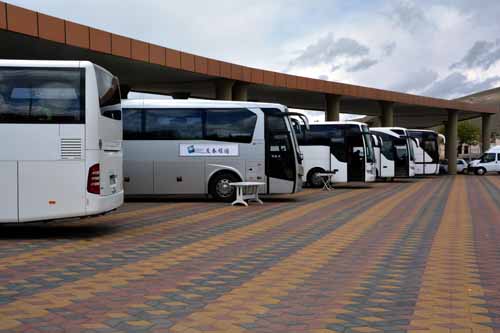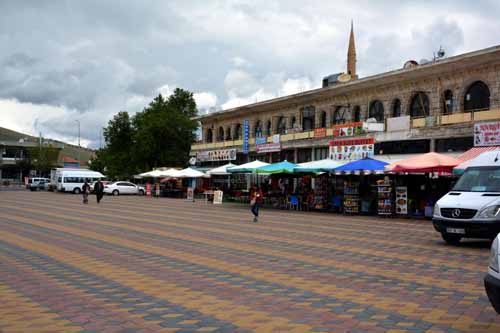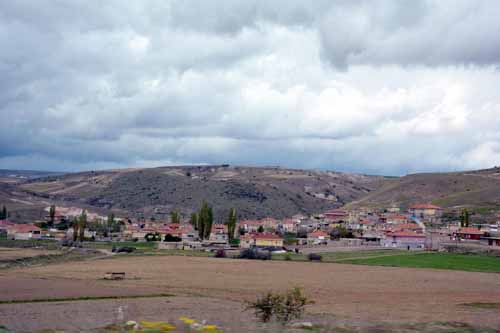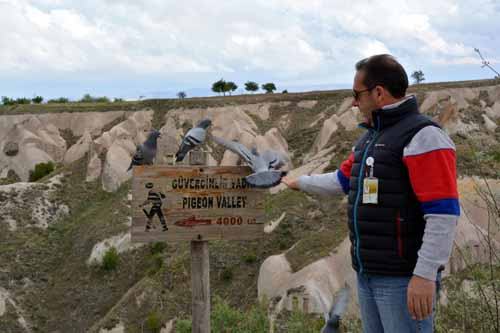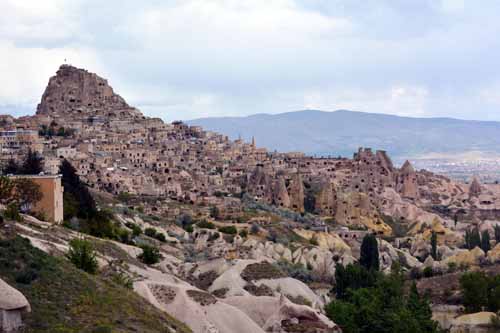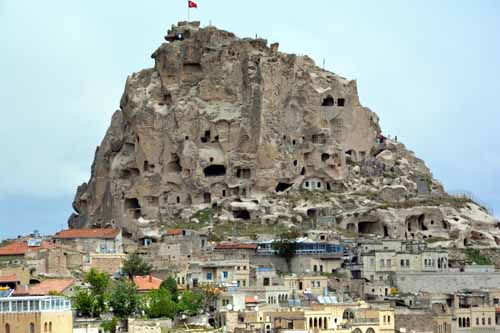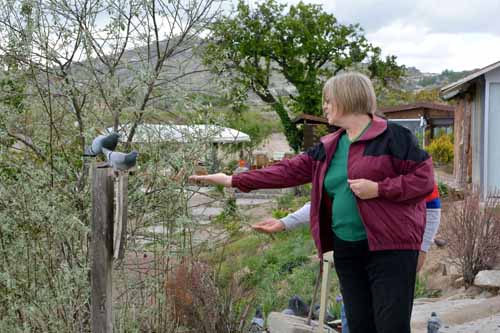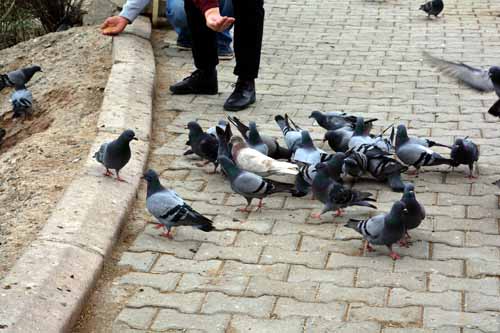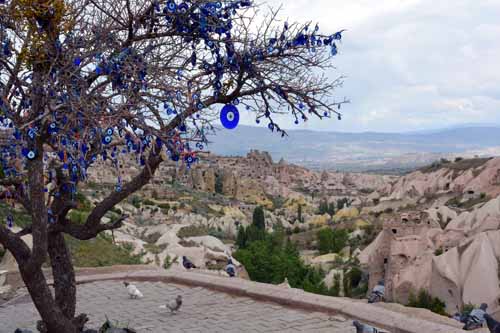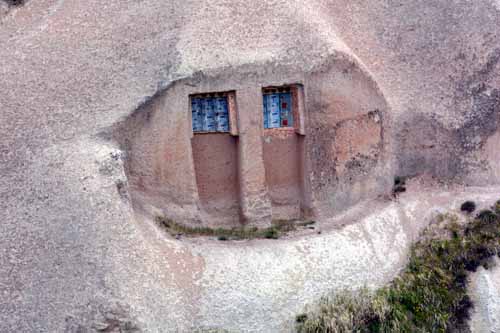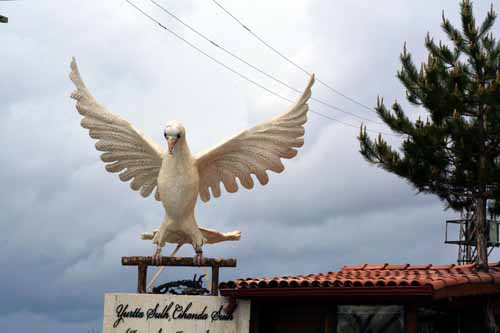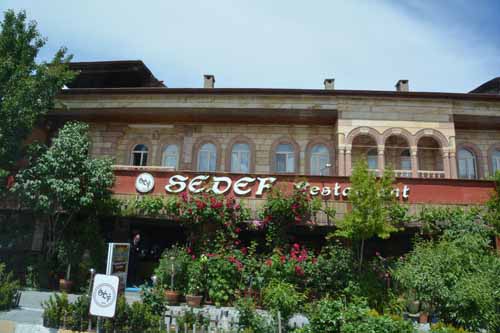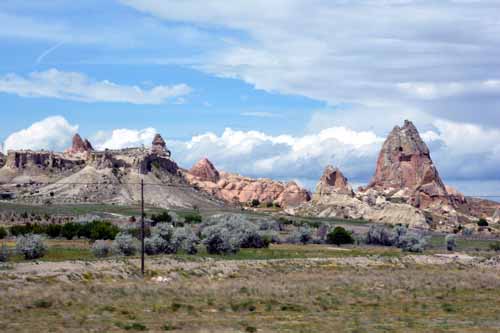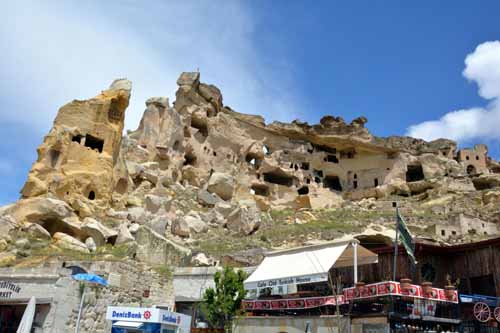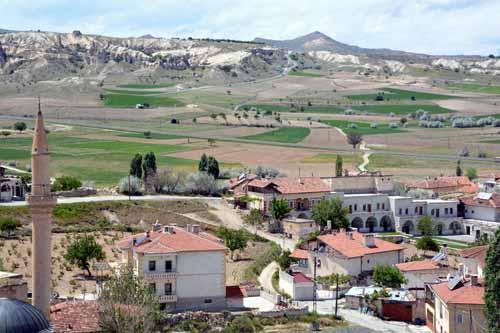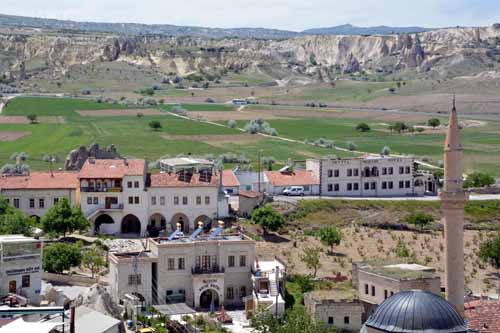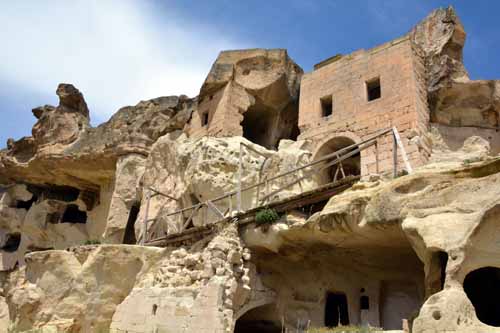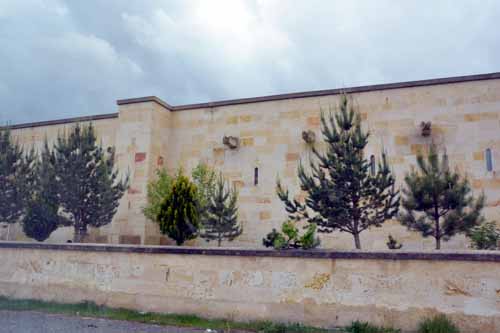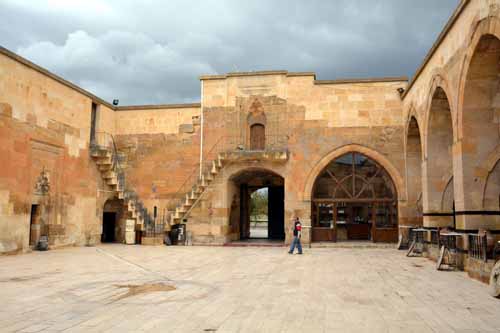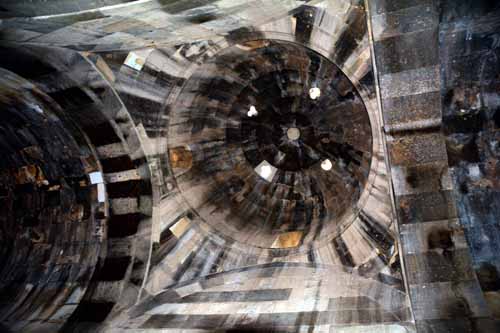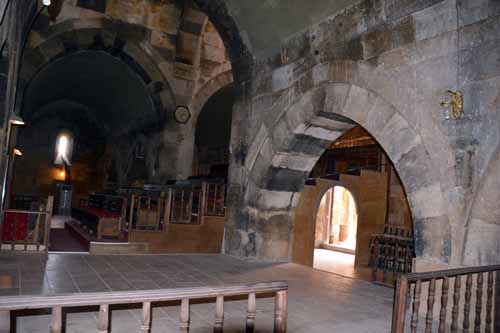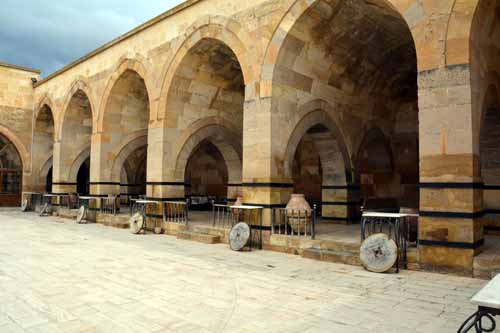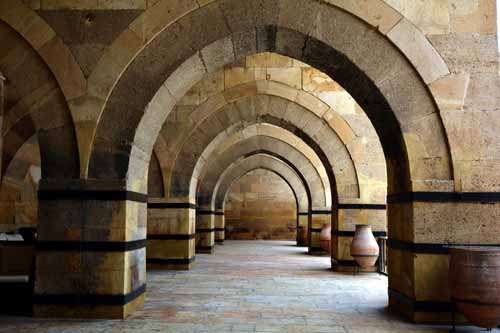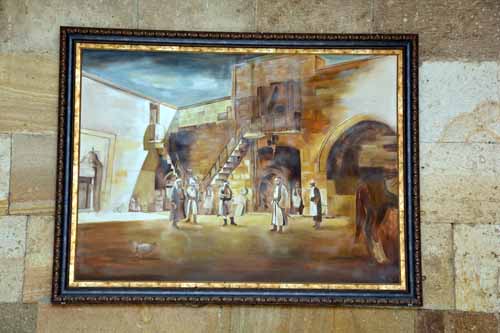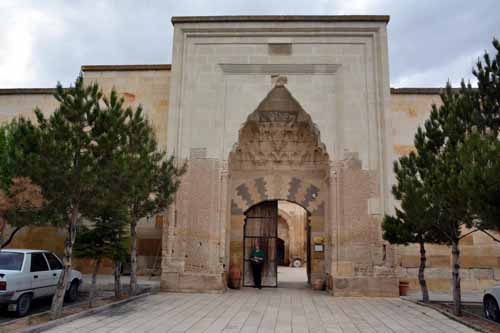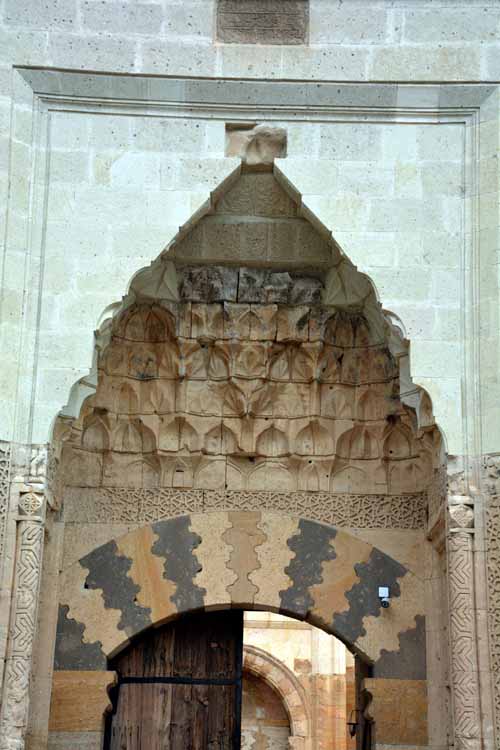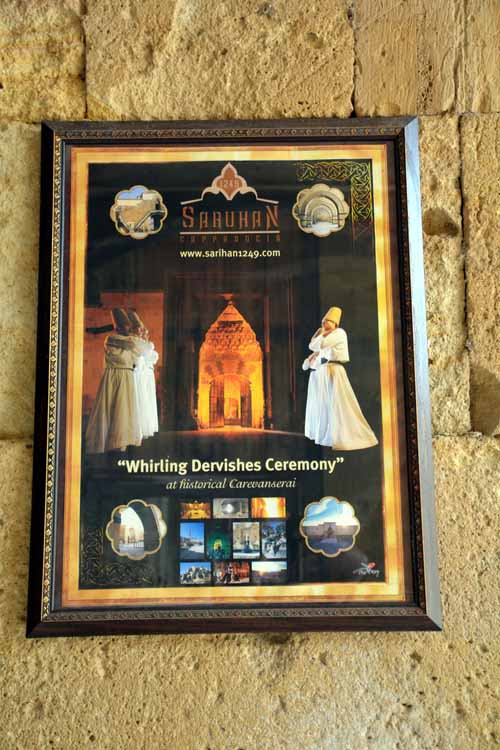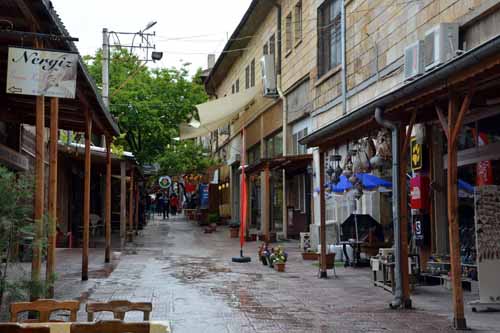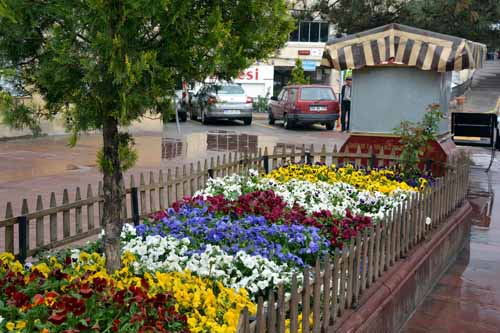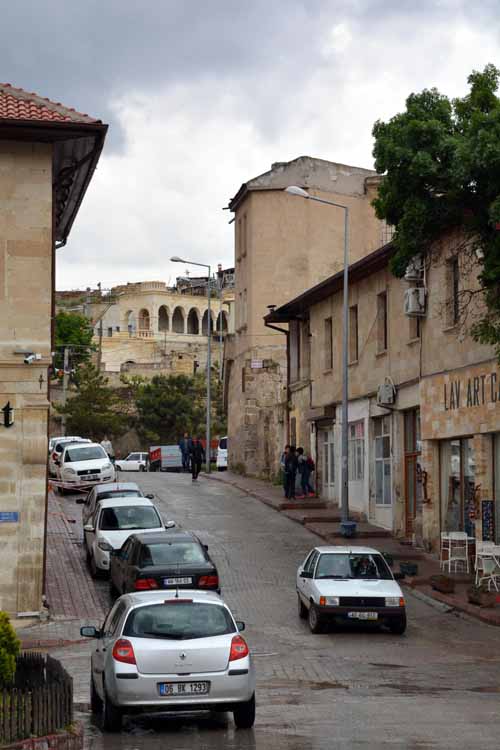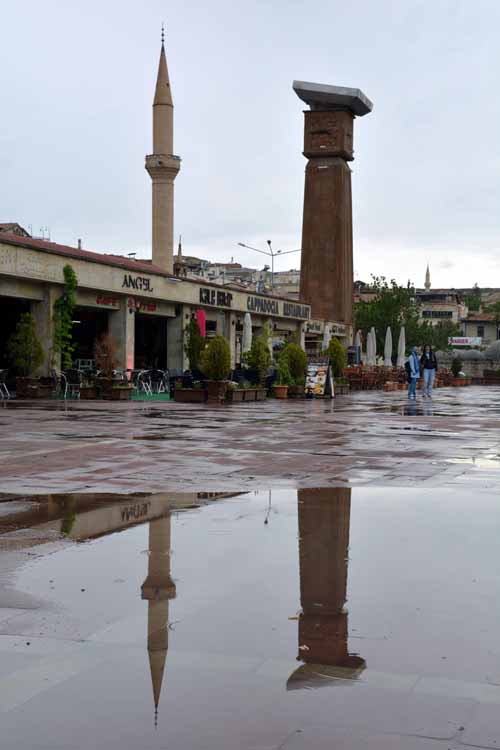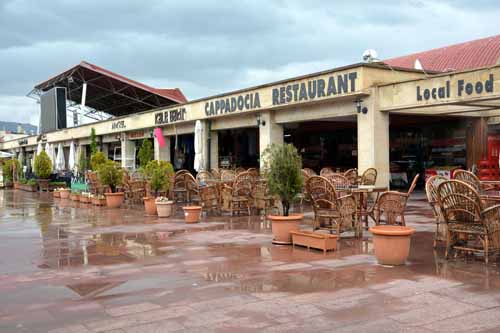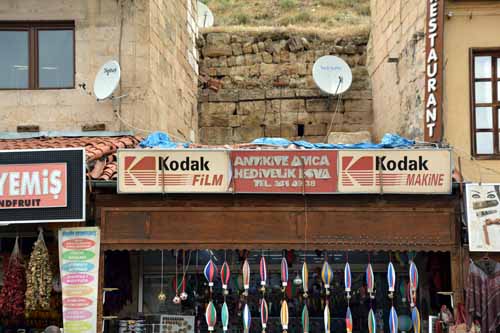Crete Pilgrimage 2016 - Day 14Turkey - CappadociaIntroductionWe were met, as planned, by our tour guide and set off for another day of ancient rocks and ruins. First stop was the "underground city" at Kaymakli, then lunch and on to one of the ancient "carevanseri" on the old Silk Road. We had a short break in Goreme, between rain showers, before being delived to the airport for our flights back to Istanbul and on to Izmir. At Izmir we were met by our new guide and driver and taken south to Kusadasi. The "underground city" at KaymakliThere are 36 underground cities in Cappadocia. They were first excavated as early as Hittite times (1600-1300BC), and expanded over the centuries as various marauding armies traversed Central Anatolia in search of captives and plunder, mostly in the early Christian era. The caves were used as places of refuge during these times rather than for day-to-day living. The underground city of Kaymakli was opened to visitors in 1964. The village is based around nearly one hundred tunnels. The inhabitants of the region still use the most convenient places in the tunnels as cellars, storage areas and stables, which they access through their courtyards. The Kaymakli Underground City has low, narrow and sloping passages. It consists of 8 floors below ground but only 4 of them are open to the public today. The spaces are organized around ventilation shafts. At the start of the second level is a church with a single nave and two apses. In front of the apse is an altar, and on the sides are seating platforms. There are also some living areas on this floor. Further down, the most important areas of the underground city are on the 3rd floor. There are numerous storage places, wineries and kitchen. Also a block of andesite with relief-texture that was used to smelt copper. The stone has 57 holes carved in the surface in which copper ore was hammered with a hard rock until pure copper was formed. Pigeon ValleyOur next stop was a terrace overlooking a deeply carved valley with a town cut into the rock. Here the locals had built many pigeon houses into the stone to encourage the birds. The purpose of the dovecots was to collect the bird dropping to use for fertiliser.
Collapsed villageAfter lunch we left Goreme and visited the remains of a village cut into the rock. There had been a catastrophic collapse a few years earlier and most of the houses had been destroyed.
The Saruhan CaravanseriCaravanseri were motels set up along the Silk Road where the camel trains could stop for the night. This one has been restored and is now used for "Whirling Dervishes" concerts
The middle of UrgupAfter visiting the caravanseri we were taken to the middle of the town of Urgup for a walk around the shops. This was a touristy part of the town, but not many tourists, so we were hassled by all the hopeful shop owners. It also started raining so we headed back to the meeting point and bought ice creams. From here we were taken to the airport for our trip back to Istanbul and our connecting flight to Izmir.
Last updated: 25/03/2017 |
